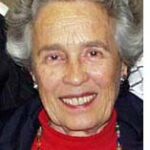By Eileen Wingard

SAN DIEGO — Conductor Michael Tilson-Thomas was replaced at the February 15 and 16 concerts, due to illness, by Teddy Abrams, conductor of the Louisville Symphony. Abrams is a rising star in the mold of Tilson-Thomas and Leonard Slatkin, two of Abrams’ mentors.
Since assuming the directorship of the Louisville Symphony in 2014, Teddy Abrams has taken his orchestra to all corners of the state for concerts funded by the Commonwealth of Kentucky. For his outreach efforts and his program for resident composers, he has drawn national recognition, including being a Grammy-Award winner and Musical America’s 2022 Conductor of the Year.
Abrams served as the Assistant Conductor of the Detroit Symphony from 2012-2014, under Leonard Slatkin. Before that, the talented young man was a Conducting Fellow and Assistant Conductor of the New World Symphony from 2008-2011, the orchestra Tilson-Thomas founded for young professionals in which to hone their skills.
As a nine-year-old, Abrams and his parents attended a concert of the San Francisco Symphony, under the direction of Tilson-Thomas, where the youngster was inspired to become a conductor and sent MTT a ten-page letter for which he received a response. They continued to stay in touch and at age 12, Abrams became MTT’s conducting student.
Teddy Abrams was, indeed, a fitting replacement for the ailing maestro. Abrams told about his connection with the great conductor when he introduced the first piece on the program, MTT’s Street Song for Symphonic Brass.
This work, originally written in 1988 for brass quintet (two trumpets, horn, trombone and tuba), was expanded in 1996 to include the full complement of the brass section with the addition of the flugelhorn. This revision added more harmonic texture and contrapuntal interest than the original and required a conductor.
A downward four-note motif dominates the first section. The syncopation in the next section reflects the influence of Gershwin. The work concludes with elements of the opening section and ends softly. The San Diego Brass Section delivered an impressive reading of this contemplative soundscape.
Next on the program was another California- bred soloist and a composer who lived his final years in Beverly Hills. Parker Van Ostrand, A 21-year-old Sacramento native, now studying with Garrick Ohlsson at the San Francisco Conservatory of Music, dove with confidence into the intricacies and challenges of Sergei Rachmaninoff’s Rhapsody on a Theme by Paganini. Paganini’s sixteen-bar melody has inspired variations by composers such as Liszt, Schumann, Brahms, and Lutoslawski. Rachmaninoff’s Rhapsody with its twenty four variations is probably the most popular. At one point, it entwines the Dies Irae with the theme and the eighteenth variation is an inversion of the theme, romanticized into a love song.
Following intermission, the brilliant young conductor, Teddy Abrams, returned to lead the orchestra in Tchaikowsky’s First Symphony, a seldom-heard work by the beloved Russian composer. This ambitious work, written the year after the composer graduated from the St. Petersburg Conservatory and took a position teaching harmony at the newly established Moscow Conservatory, caused him much grief.
However, its use of Russian folk material, especially in the second movement’s heartfelt Adagio, in the endearing waltz in the Scherzo movement and the Russian folk song in the last movement, stamped its nationalistic character.
The Finale’s exciting fugal passages, the beautiful return to the movement’s opening Andante lugubre before the triumphant conclusion, and that glorious ending all brought the audience to its feet. The many solo passages, by flute, clarinet, oboe, bassoon, horn were all duly recognized by the guest conductor.
Once again, the San Diego Symphony Orchestra delivered a memorable concert in its newly renovated Jacobs Music Center. Concerts continue through the end of May. If you have not yet experienced the symphony in its improved surroundings, there are still many opportunities this season.
*
Eileen Wingard, a retired violinist with the San Diego Symphony Orchestra, is a freelance writer specializing in coverage of the arts.
ALWAYS a grand treat reading your words, dearest Eileen! You are so very knowledgeable and so
very interested in your critical descriptions and I praise you ALWAYS!!!!
Many thanks!!!